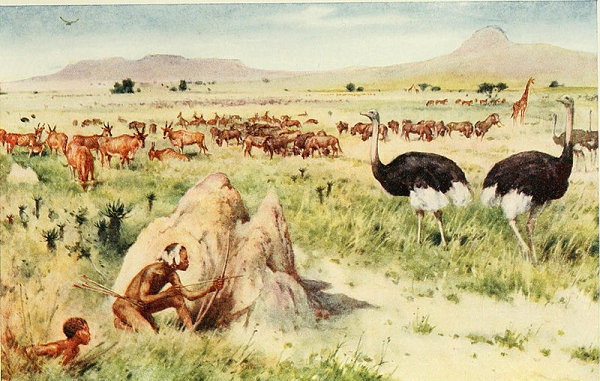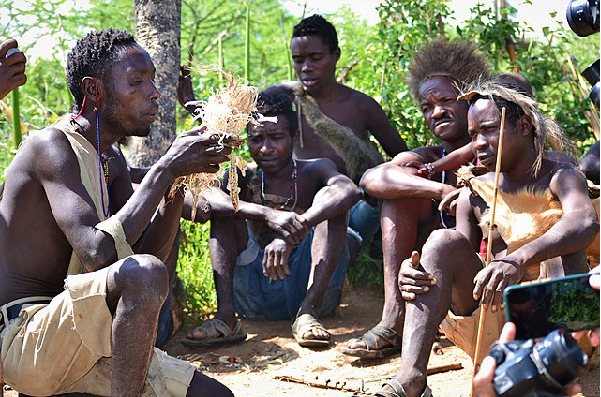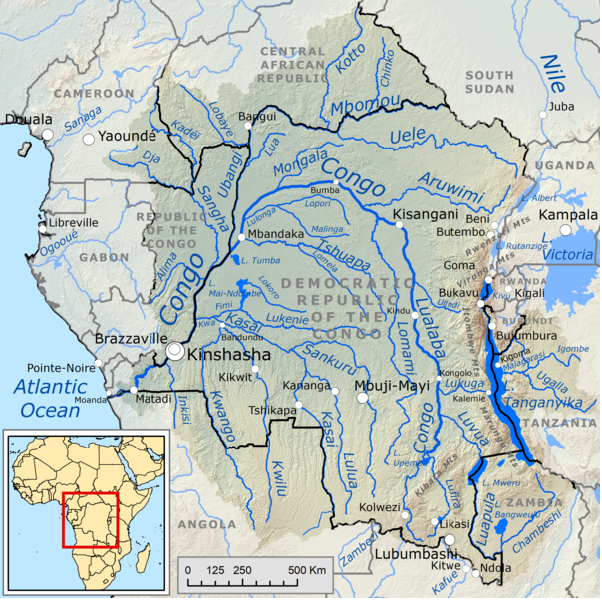

Hunter-gather societies refer to the primitive group of people. When humans evolved on Earth, they did not know how to produce food, therefore, they used to feed themselves with things in their ways such as plants, fruit, and animals. Hence, they came to be called “hunter-gatherers”. The coming of the Neolithic Age, when humans began to domesticate animals and farm, marked the end of humans nomadic lifestyle of humans.

Internet Archive Book Images, No restrictions, via Wikimedia Commons
How hunter-gatherers mostly lived in groups (initially small which later became large), then acquired the concept of several family units. Subsequently, they made weapons and tools, which enabled them to survive and utilize the abundance of food in their surroundings. If resources of their surroundings got exhausted they used to move to other areas., this is how they continued to live nomadic life till the beginning of agriculture.
Hunter-gatherer refers to a group of people, who are dependent on wild food like animals and plants produced on their way, for their survival.
Africa is considered the continent of the origin of humans on Earth. As we know that the early humans were initially hunter-gatherers before beginning farming and settled life. There are still some groups of people living as hunter-gatherers in Africa. These groups included Hadza, Sadawe, and Khomani Bushmen of Africa.

Starting of fire by Hazda Man
BrixL, CC BY-SA 4.0
The regions of Africa where these hunter-gatherers are found, included most of South Africa, central Africa, and some parts of Angola, Zambia, Kenya, and Tanzania.
The two geographical features which helped these hunter-gatherers to sustain themselves in Africa are the Kalahari Desert and the Congo river basin.

Congo River Basin
Kmusser, CC BY-SA 4.0
The Kalahari Desert, is the world’s second-largest desert, despite having a scarcity of water due to seasonal rainfall, is a place for several species of animals and plants which made life possible for many hunter-gatherers’ communities.
The Congo river basin consists of huge rainforests, which provide a home to many groups of primitive communities like the Mbuti and Pygmy groups.
There are several tribes in the world, which still engage in hunting-gathering or foraging for their survival. Some of these are as follows −
The Khoe-San − The Khoe were pastoralists, who were dependent on the herd of livestock for their survival. The San people were also known as “Bushmen,” These were hunter-gatherers who scavenged for many natural things like plants, insects, animals, roots, water, etc. In South Africa, the ‘San’ is used to describe the native people of the region, who live by hunting and gathering.
Although different in terms of culture and language, the Khoe and San are believed to have a common heritable origin. According to researchers, the Khoe- San are amongst one of the world’s most ancient populations of humans.
The Baka and Mbuti − The area near the Congo river basin is home to the Pygmy groups of Baka and Mbuti. These are nomadic groups living in small groups, relying mainly on fishing, bushmeat and eating plants and fruits. Their community was more egalitarian, they took decisions with the consent of all members of their communities.
Hadza − The Hadza are a group of modern hunter-gatherers who existed in the northern part of Tanzania. They are believed to be one of the last groups of hunter-gatherer tribes in Africa with almost 1,300 tribe members.
With the development of agriculture in the neolithic period, the hunter-gathers society began to decline. However, many hunter-gathers existed till modern times. There are some hunter-gatherers in parts of Europe, Africa and in Sentinel Island in the Indian Ocean and parts of the Amazon rainforest.
Over the last 500 years, the population of the hunter-gatherers began to decline dramatically. Today very few of them with their old traditions continue to live and the majority of them have adopted a sedentary lifestyle and begun to settle down. Along with this the coming of Europeans also affected these tribal communities, because many San and Khoi either died of disease or joined other tribes for their survival. And the Hadza of Tanzania is one of those last groups of the hunter-gatherers.
According to the data collected by ethnographers and their cross-cultural comparison, the recent hunter-gatherer societies possess the following traits −
They are either semi-nomadic or some of them are still fully nomadic.
They prefer to live in small groups or communities.
They live in remote and less populated areas.
They do not have any particular political official.
It is not economic or wealth differentiation between communities.
In these communities, people are specialized by their age and gender. One example of this is that women in their communities still gather plant produce whereas men are the ones who indulge in hunting and fishing.
They still believe in natural forces as symbols of nature, therefore, worship them as their tribal deities.
When humans evolved on earth, they tried to adapt to their specific environment by utilizing resources available in that environment. And for that matter, they began to engage in hunting and gathering. For this purpose, they made different kinds of tools and weapons. As far as hunter-gatherers are concerned, the introduction of agriculture and domestication of animals in the Neolithic period began to reduce dramatically.
Although the hunting-gathering societies began to decline, there were still some groups of people, who still relied on this hunting-gathering way of life. Such communities are there in different parts of the world, mainly in Africa and some parts of America, Andaman, and Nicobar Islands. They still prefer to live in isolation and keep themselves away from the rest of the world and still live in their enclosed tribal culture.
Life in these communities might be fraught with risks and dangers. But they live in harmony and cooperation.
Q1. What do you understand by the term nomadic?
Ans. The term nomadic refers to a group of people wandering from one place to another without any permanent shelter for their survival.
Q2. How did the life of early humans change from Stone Age to Metal Age?
Ans. The transformation from Stone Age to the Metal Age witnessed many advancements in the life of humans. It led to their transition from food gatherers to food producers. Tools made up of the metal are more stronger and durable paving the way for settled life and increase in population
Q3. Who was believed to be the first humans?
Ans. Homo Erectus was believed to be the first ancestor of modern humans. They first evolved in Africa nearly 2 million years ago and moved to different parts of Eurasia.
Q4. How did Europeans impact the life of the South African tribe ”Khoi”?
Ans. With the coming of Europeans to the Cape of Good Hope in 1652 Africa, they brought with them weapons and new diseases. These diseases included Smallpox, which caused many of the San and Khoi people to succumb to their life or territories.